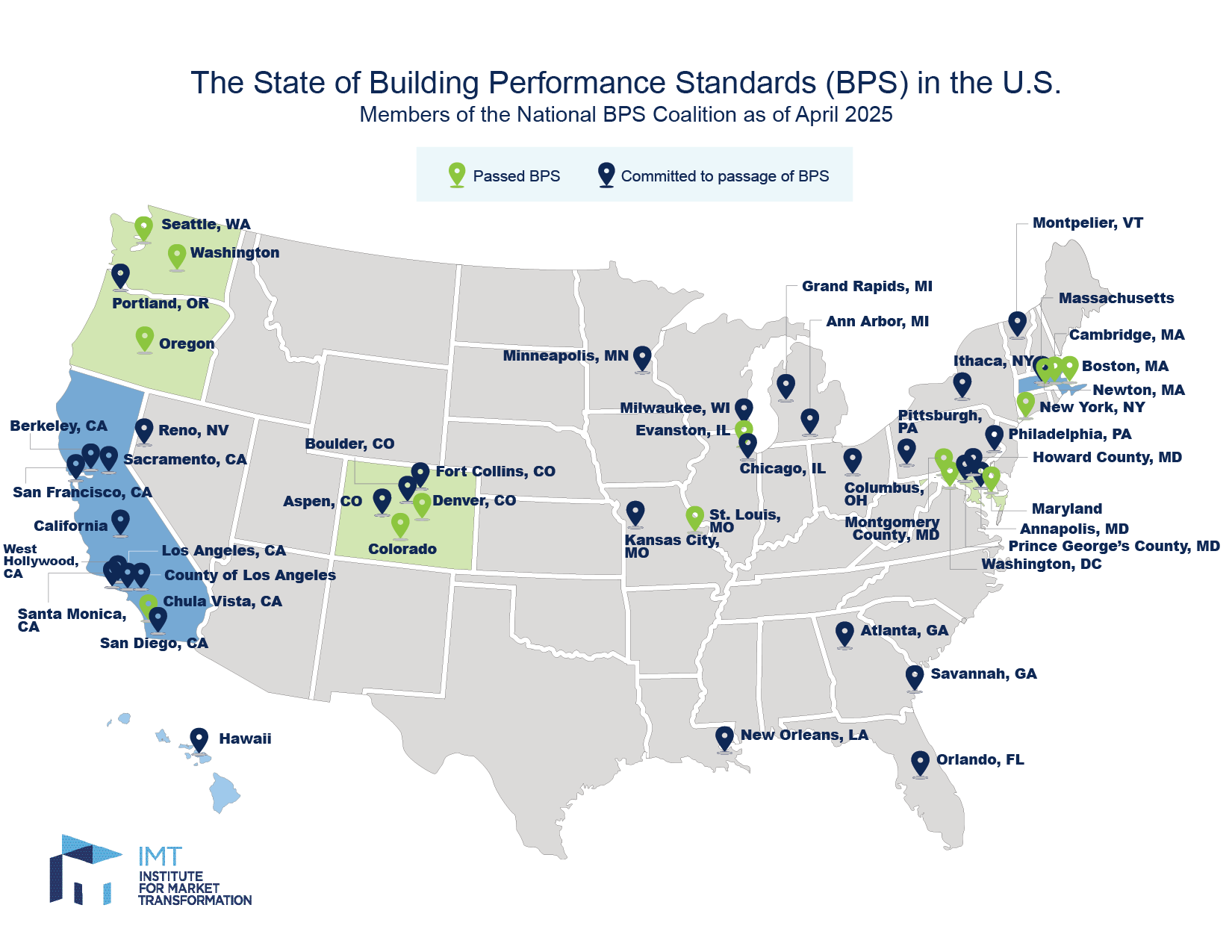Demystifying Building Performance Standards
August 27, 2025
Make sure you're energy efficient as well as compliant.
Let’s start with the basics. What exactly are Building Performance Standards (BPS)?
If you’re not completely aware of BPS, including what they require and where they’re required, you’re not alone.
BPS simply requires existing buildings to meet certain energy performance targets. These targets are based on what is known as Energy Use Intensity (EUI), which are interim goals designed to reach an ultimate energy use objective over time.
Think of it this way: You’ve more than likely heard of energy codes for new construction, which can apply to specific areas such as lighting or HVAC equipment. Those energy codes are like snapshots of energy use for a moment in time. A BPS is more like an entire movie—the energy use and operation of the building over an extended period.
Who sets building performance standards?
Here is where everything can get more than a little confusing. BPS can be established by state, county, or city levels. Often, state standards are set and the more local levels refine or increase the criteria.
For example, the state of Maryland set a standard of having net zero direct carbon emissions by 2040. Montgomery County in Maryland set their own target to achieve that by 2035. Depending on where your locations are situated, you have to make sure you’re abiding by the correct standards.
Federal standards for energy efficiency are currently in flux, and right now they don’t directly affect BPS, except for the Department of Energy program that provides support for state and local levels to help them create building performance standard programs.
Who requires BPS?
This map shows where BPS is now required and which areas of the country will eventually have them. The green “pins” represent states and local levels that have enacted BPS; the blue shows areas that have committed to passing BPS.
There is no doubt that BPS is a growing trend.
Which buildings are required to have BPS?
BPS are for non-residential buildings of a certain size, depending on the locale. But BPS can also apply to multi-family buildings that meet the threshold. Often a relatively small percentage of an area’s buildings represent a large percentage of its energy use.
Those standards can also change. Montgomery County in Maryland started BPS for buildings that were 50,000 square feet and above. Their criteria is now 25,000 square feet.
Some cities with BPS requirements offer websites that allow you to see if your building requires BPS, and others have spreadsheets that list all buildings needing BPS.
How are BPS established?
The most common way to track usage is with the EUI or by monitoring annual kilowatt hours per square foot. BPS sometimes include water usage as a metric. Some municipalities such as New York City use a greenhouse gas target number. The target levels vary by building type and location.
How do you know if you’re compliant and energy efficient?
How old are your building systems? If your lightning, your HVAC system, or both are more than 10 years old, it’s a strong probability that you have both compliance and efficiency issues.
You can benchmark your building by using free tools such as EnergyStar Portfolio Manager and review any state or local BPS that could affect your building, both current and upcoming.
The smartest strategy is to work closely with an energy professional to help review and prioritize your building portfolio.
Energy management consultants you can rely on.
EMC was founded in 2003 and we’re now one of the largest providers of innovative turnkey energy management solutions, completing more than 12,000 best-in-class projects every year.
If you have any questions regarding the information in this article or if you’d like to talk with us about analyzing your current BMS, contact us today.



